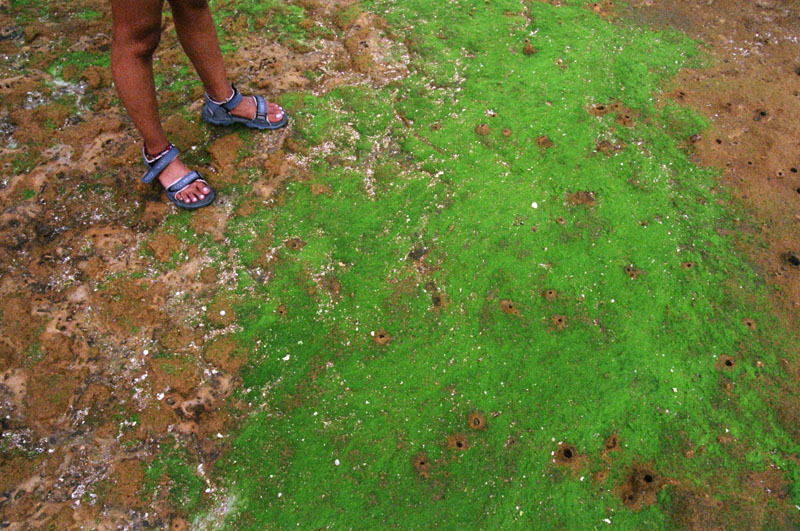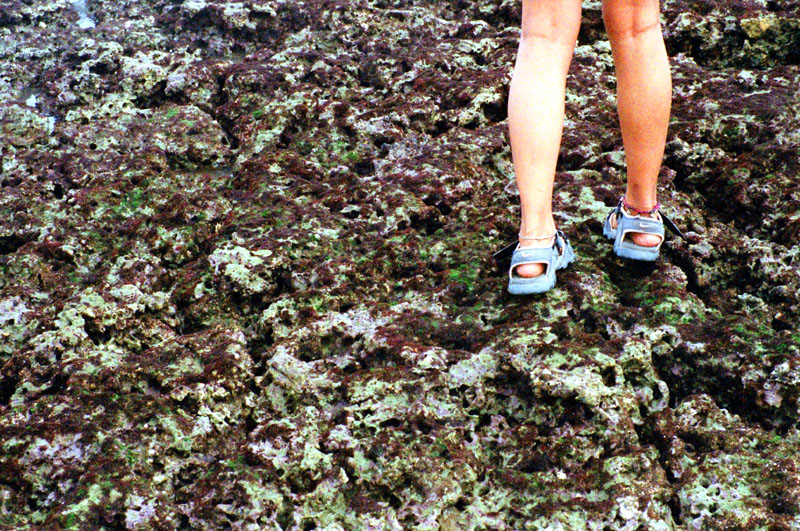Of threads and bonds...

[Edit] Entry for Photo Friday: BLUR [/Edit]
______
Saturday, last, was Raksha Bandhan. Hindu women tie a sacred thread (rakhi) on their brothers' wrist on this day. Symbolic of the bond tieing them together. The brother, in turn, vows to stand by her and protect her for life. There's an old story of how a Rajput queen in Rajasthan sent a rakhi to the Mughal ruler in Delhi, when her state was attacked by a neighbouring kingdom, beseeching him to come to her aid. The sultan, respecting the symbolism of the rakhi, promptly sent a huge army to ward off the invaders. From what I remember, the story had a happy ending. Anyway, it made for good story-telling when we were little.
Raksha Bandhan, this year, brought back memories of my little brother's wedding a couple of months back. A bond sealed, albeit of an altogether different sort. They tied sacred threads on each other's wrists, a miniscule part of an elaborate wedding ritual that made them one, and promised to stay with each other through thick and thin. This one's for them...
______
Nikon F75, 28-105mm
Fuji 800ISO
2005, My brother's wedding, Pune, India.
Mangalore tiles, and wet pigeons
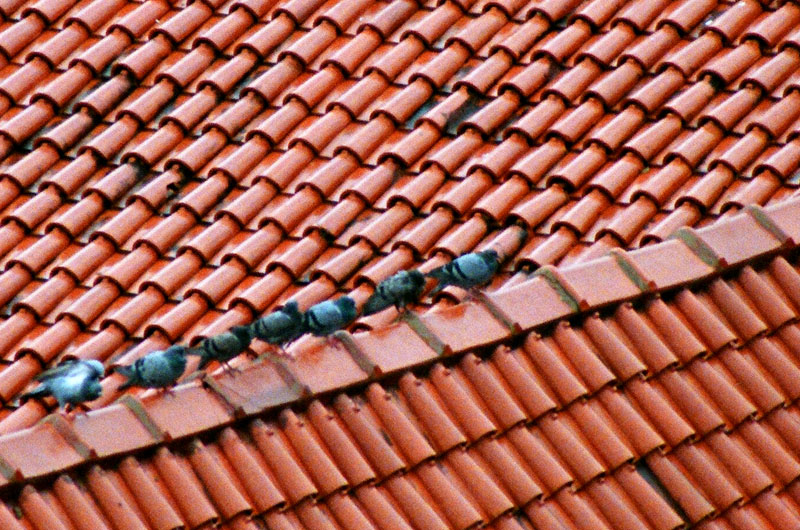
And this one comes with no accompanying text. At least for now. Because I'm down with a really nasty case of flu and I can't get my brain to jump-start this morning.
______
Nikon F75, 70-300mm
Fuji 800ISO
2005, The little bungalow behind my office, Ahmedabad, India.
Faerie Lights
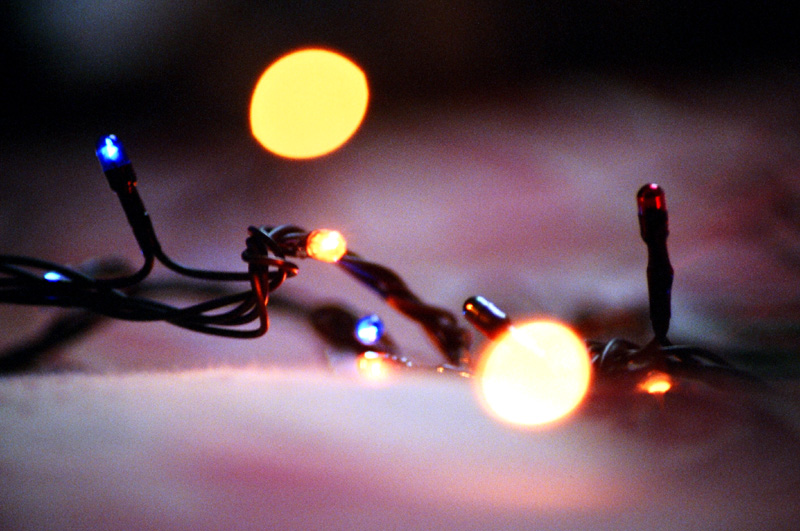
You don't have to search very far or look very long to find beauty in this world.
No..?
Faerie lights always take me back to Diwali and Christmas, when we were children. The entire family would get together once a year and it used to be bonus time for us kids. We were a wild bunch and got into all kinds of mischief, my brother most of all, but Diwali and Christmas are times of good cheer and our parents, more often than not, chose to be leniant and let us have the run of the place. As Alexandra says, and I agree, faerie lights are about warmth and family. Even if they're strewn carelessly on the bed with the express purpose of photographing them, as these obviously are...
______
Nikon F75, 70-300mm, 1:2 Macro at 300mm
Fuji 800ISO
2005, In my bedroom, Ahmedabad, India.
Red Spider Lilies
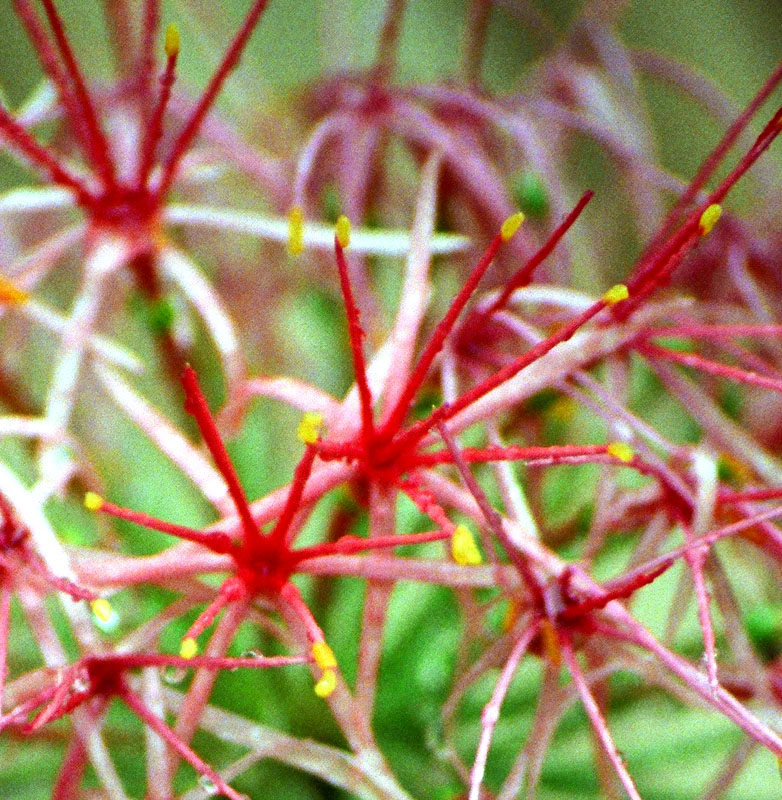
Once-a-year bloomers, these. A couple of weeks back the one in my garden suddenly decided to show up. Pity it was in the middle of the monsoons and the sky was overcast for the entire week that it was in bloom.
I spent two years of my life in the north-east corner of the country, back when I was around 10 years old. The north-east was virgin territory then, almost unheard of by tourist-folk, and therefore wild and beautiful. And prime orchid country! My mother took a fascination to cultivating orchids at home and over time I was taken in by the wildly eccentric plants that orchids can be. When my mother shifted back to warmer climes she got along with her a whole truckload of cultivated orchids which she tended with much care. But Ahmedabad's not a very kind place for most people, let alone orchids.
While not an orchid, this spider lily has that 'quality' that I find so endearing. A certain eccentricity, if you will...
______
Nikon F75, 70-300mm, 1:2 Macro at 300mm
Fuji 800ISO
2005, In my garden, Ahmedabad, India.
Tuk-Tuks
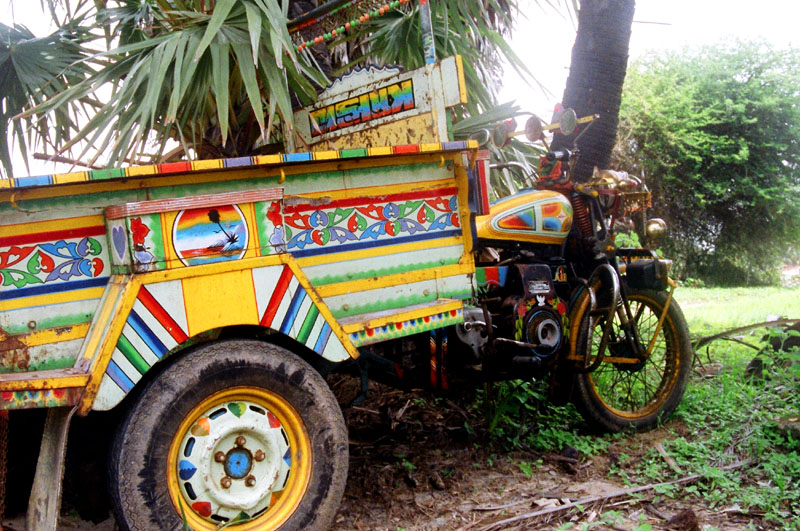
I've been busy at work these last couple of weeks so I haven't been able to spend as much time here as I would've liked to. But I've been scanning old films, some new ones, processing some pictures and I think I've put together enough material to last me another week or so. So tonight I'll post something that's very close to my heart.
______
Tuk-tuks (or chhakdas as they are known in some parts of India), motorcycle bodies mated to a large wooden carrier, are mostly ubiquitous all over the country. Especially so in the more rural areas. They are seen as a cheap alternative to mainstream transportation, and small enough to maneuvre easily on the tiny, winding country roads. Almost all are characterised by intricately painted patterns in bright, often psychedelic, colours. To most Indians the garish designs come across as loud and crass. Nonetheless they seem to be a favourite with those in the 'transportation' industry, since the 'shout-out' colours are a recurring theme even on other mass transport vehicles such as buses, trucks and autorickshaws- not just in India but all over the south and south-east Asian region. And sometimes it takes an outsider to get us to appreciate something that we find repulsive, yet is an integral part of the social fabric.
During the late 1960s and early 1970s Ettore Sottsass, the Italian architect turned industrial designer, made several visits to India as part of the UNDP cultural exchange program. A professor of mine from design school, then a much younger man, travelled with him through parts of northern and central India and they spent long hours discussing the aesthetic as typefied by trucks and tuk-tuks in this part of the world. A significant portion of the discussion focussed on Sottsass' dissatisfaction with the International Style prevalent then and the Post-Bauhaus black-box designs churned out in the US and Europe. He saw something in the irreverant humour and the gross aestheitc of tuk-tuks that we Indians had obviously missed.
A decade later, in 1981, Sottsass and a few associates launched the Memphis Group. Their work, touted by many as more fashion than academia, went a long way in breaking out of the black-box mould that design had gotten into post-Bauhaus. Characterised by bright colours, rich visual texture and a complete disregard for function or propriety, Memphis soon became a fashion statement. While the group disbanded in 1988, Memphis became a watershed period in the history of modern design.
And, as some of us in India like to believe, it all started here with the tuk-tuk.
______
Nikon F75, 28-105mm
Fuji 400ISO
2005, Diu, India

